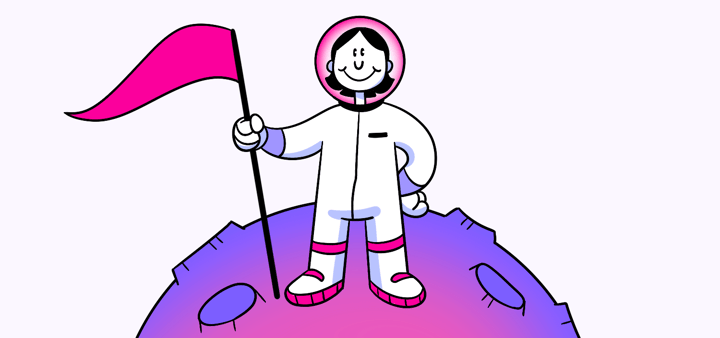Why User-Centered Design is Essential for Modern Web Development
The Importance of User-Centered Design in Modern Web Development. In today’s digital landscape, user-centered design has become a fundamental aspect of web development. Gone are the days when websites were designed solely based on the preferences of businesses or designers. Now, it’s all about putting the user at the center of the design process. Understanding the importance of user-centered design is crucial for creating websites that truly resonate with users and drive business success.
🔩 The Nuts and Bolts:
- User-Centered Design Enhances User Experience: By prioritizing users’ needs and preferences, websites become more intuitive, engaging, and visually appealing, leading to increased satisfaction and conversion rates.
- Continuous User Involvement is Key: Involving users through testing, surveys, and feedback sessions throughout the design process ensures the final product meets their expectations and needs.
- Empathy is Crucial in User-Centered Design: Understanding users’ goals, motivations, and challenges allows designers to create solutions that address real-world problems, enhancing overall user experience.
- Research and Analysis Drive Design Decisions: Thorough research and analysis of the target audience provide valuable insights that inform design choices, ensuring the website aligns with users’ needs.
- Testing and Evaluation Improve Usability: Continuous testing and evaluation help identify usability issues and areas for improvement, ensuring the website remains effective and user-friendly.
- User-Centered Design Boosts Business Success: By creating exceptional user experiences, businesses can increase user engagement, improve conversion rates, and build brand loyalty.
- Future Trends in User-Centered Design: Personalization, accessibility, and mobile-first design are shaping the future of user-centered web development, ensuring websites remain relevant and inclusive.
Understanding User-Centered Design
User-centered design, also known as UCD, is an approach to web development that prioritizes the needs, preferences, and behaviors of the target audience. Instead of relying on assumptions or personal opinions, UCD relies on extensive research and validation to create an intuitive and enjoyable user experience.
When implementing user-centered design, it is crucial to involve users throughout the design process. This can be done through user testing, surveys, and feedback sessions to gather insights and ensure that the final product meets the users’ expectations. By incorporating user feedback, designers can iterate on their designs and make improvements based on real user experiences.
Key Principles of User-Centered Design
There are several key principles that guide the practice of user-centered design:
Empathy: Understanding the users’ goals, motivations, and challenges.
Usability: Ensuring the website is easy to navigate and use.
Clarity: Presenting information in a clear and concise manner.
Consistency: Maintaining a consistent design and layout throughout the website.
Accessibility: Making the website accessible to users with disabilities.
Empathy is a cornerstone of user-centered design, as it involves putting yourself in the shoes of the users to truly understand their needs and pain points. By empathizing with users, designers can create solutions that address real-world problems and enhance the overall user experience.
Enhancing User Experience
User-centered design is all about creating an exceptional user experience. By understanding the users’ needs and preferences, web developers can design websites that are intuitive, engaging, and visually appealing. This, in turn, leads to increased user satisfaction and higher chances of conversion.
One key aspect of user-centered design is conducting user research to gain insights into the target audience. This involves analyzing user behavior, preferences, and pain points to tailor the website design accordingly. By incorporating user feedback throughout the design process, developers can ensure that the final product meets the needs and expectations of the users.
Boosting Website Performance
User-centered design doesn’t just focus on aesthetics and usability. It also plays a vital role in optimizing website performance. By following UCD principles, web developers can improve website loading speed, minimize errors, and ensure a smooth browsing experience for users. This, in turn, enhances the overall performance of the website and creates a positive impression.
Furthermore, user-centered design involves creating responsive websites that adapt to different devices and screen sizes. This ensures that users have a consistent experience across desktops, laptops, tablets, and smartphones. By prioritizing mobile responsiveness, web developers can reach a wider audience and provide a seamless browsing experience regardless of the device being used.
Build something your buyers *truly* want
Subscribe to Closing the Gap—a newsletter to help makers and doers get closer to customers. Learn more.
We believe in protecting your data. Here’s our Privacy Policy.
The Process of Implementing User-Centered Design
Research and Analysis
The first step in implementing user-centered design is thorough research and analysis. This involves gathering data about the target audience, conducting user surveys, interviews, and usability tests, and analyzing competitors’ websites. The insights gained from this research provide valuable information that informs the design decisions and ensures the website meets the users’ expectations.
Furthermore, during the research and analysis phase, it is crucial to consider factors such as user demographics, behavior patterns, and technological preferences. Understanding the users’ goals and motivations is essential for creating a website that not only meets their needs but also provides a seamless and enjoyable user experience. By delving deep into user research, designers can uncover valuable insights that shape the entire design process.
Design and Prototyping
Once the research is complete, web designers can start crafting the visual elements and layout of the website. This involves creating wireframes, mockups, and prototypes to test the design concept and gather feedback from users. Iterative design and prototyping help refine the user interface and ensure that it aligns with the users’ needs and preferences.
In addition to creating visual prototypes, designers also focus on creating interactive prototypes that allow users to experience the website’s functionality firsthand. Interactive prototypes provide a more realistic representation of the final product, enabling designers to identify potential usability issues early in the design process. By involving users in the prototyping phase, designers can gather valuable feedback that guides further refinements and improvements.
Testing and Evaluation
After the design and prototyping phase, it’s time to put the website to the test. User-centered design emphasizes continuous testing and evaluation to identify any usability issues or areas for improvement. Usability tests, A/B testing, and analytics data provide valuable insights into user behavior and allow web developers to make informed changes to enhance the website’s effectiveness.
Moreover, usability testing involves observing real users as they interact with the website, uncovering pain points, and areas of confusion. By collecting and analyzing user feedback, designers can make data-driven decisions to optimize the website’s usability and overall user experience. Continuous testing and evaluation are essential components of user-centered design, ensuring that the website evolves to meet the changing needs and expectations of its users.
UX Research Methods
The Impact of User-Centered Design on Business Success
Increasing User Engagement
By focusing on user-centered design, businesses can create websites that captivate and engage users. Intuitive navigation, compelling visuals, and personalized experiences keep users hooked and encourage them to explore more of what the website has to offer. Increased user engagement leads to longer session durations, decreased bounce rates, and higher chances of conversions.
Moreover, user-centered design goes beyond just aesthetics; it involves understanding the needs, behaviors, and preferences of the target audience. By conducting user research, businesses can gain valuable insights that inform the design process, ensuring that the website meets the users’ expectations and provides solutions to their pain points. This user-centric approach not only enhances the overall user experience but also fosters a deeper connection between the brand and its customers.
Improving Conversion Rates
A conversion is the ultimate goal of any website – whether it’s a purchase, signup, or download. User-centered design optimizes the user journey, streamlines the conversion process, and removes any barriers or friction that may hinder users from taking the desired action. By facilitating smooth and seamless interactions, user-centered design dramatically improves conversion rates.
In addition to simplifying the conversion process, user-centered design also emphasizes the importance of clear calls-to-action (CTAs) and persuasive messaging. By strategically placing CTAs and crafting compelling copy, businesses can guide users towards the desired conversion actions, increasing the likelihood of successful conversions. This strategic alignment of design and content not only enhances usability but also boosts the overall effectiveness of the website in achieving business objectives.
Building Brand Loyalty
When users have a positive experience with a website, they are more likely to develop loyalty towards the brand. User-centered design not only satisfies users’ immediate needs but also nurtures long-term relationships. By focusing on user satisfaction, businesses can build trust, credibility, and a strong brand identity, resulting in loyal customers who return time and time again.
Furthermore, brand loyalty cultivated through user-centered design extends beyond individual transactions; it leads to advocacy and word-of-mouth recommendations. Satisfied customers who have had a seamless and enjoyable experience on a website are more inclined to share their positive experiences with others, contributing to the brand’s reputation and attracting new customers. This cycle of loyalty and advocacy reinforces the business’s market position and sets the foundation for sustainable growth and success.
🚀 If you’re using Helio
Test your website for a seamless and enjoyable experience.

Create solutions that address real-world problems and enhance the overall user experience.
Future Trends in User-Centered Web Design
Personalization and Customization
Personalization is the future of web design. Tailoring the user experience based on individual preferences and behavior not only enhances user satisfaction but also helps businesses deliver targeted content and recommendations. By leveraging data and technologies, user-centered design can create personalized experiences that resonate with users on a deeper level.
Imagine a website that knows exactly what you’re looking for even before you do. With the power of personalization, web designers can analyze user data to understand their preferences, interests, and browsing behavior. Armed with this knowledge, they can create tailored experiences that anticipate users’ needs, making their journey through the website seamless and intuitive.
For example, a clothing retailer can use personalization to showcase products that align with a user’s style, size, and color preferences. By presenting relevant recommendations, they can increase the chances of a user making a purchase and foster a sense of loyalty.
Accessibility and Inclusivity
Inclusive design is gaining prominence in the web development community. User-centered design ensures that websites are accessible to users with disabilities, allowing everyone to access and engage with online content. This emphasis on accessibility not only benefits a broader audience but also aligns with ethical and legal obligations.
Imagine a world where websites are designed with everyone in mind, regardless of their abilities. User-centered design takes into consideration various accessibility features, such as screen readers, keyboard navigation, and color contrast, to ensure that all users can interact with a website seamlessly.
By prioritizing accessibility, businesses can tap into a vast market of users who may have been previously excluded. Moreover, an inclusive website not only enhances the user experience but also sends a powerful message about a company’s commitment to diversity and equal opportunity.
Mobile-First Design
With the rise of mobile devices, user-centered design is increasingly focusing on mobile-first approaches. Prioritizing mobile optimization ensures that websites are fully responsive, easy to use, and visually appealing on smaller screens. By catering to the growing number of mobile users, businesses can reach a wider audience and stay ahead of the competition.
Imagine a website that seamlessly adapts to any screen size, providing a consistent and enjoyable experience for users, whether they’re on a desktop, tablet, or smartphone. Mobile-first design places the needs of mobile users at the forefront, ensuring that they can access and interact with a website effortlessly.
By embracing a mobile-first approach, businesses can optimize their websites for speed, performance, and user engagement. This not only improves the overall user experience but also boosts search engine rankings, as search engines like Google prioritize mobile-friendly websites in their search results.
In conclusion, user-centered design is no longer a luxury but a necessity in modern web development. By placing the user at the center of the design process, businesses can create websites that are intuitive, efficient, and memorable. Whether it’s enhancing user experience, boosting website performance, or driving business success, the importance of user-centered design cannot be overstated. As technology continues to evolve, trends like personalization, accessibility, and mobile-first design will shape the future of user-centered web development. So, if you want to stay ahead in the fast-paced digital world, embrace user-centered design and create websites that truly resonate with your target audience.
User Centered Design FAQs
User-centered design (UCD) is an approach to web development that prioritizes the needs, preferences, and behaviors of the target audience. It relies on extensive research and validation to create intuitive and enjoyable user experiences.
User-centered design is crucial because it ensures websites are intuitive, engaging, and meet users’ needs. This leads to increased user satisfaction, higher conversion rates, and stronger brand loyalty, driving business success.
Key principles of user-centered design include empathy, usability, clarity, consistency, and accessibility. These principles guide the design process to create websites that are user-friendly and inclusive.
User-centered design enhances user experience by understanding users’ needs and preferences, creating intuitive interfaces, and providing a seamless browsing experience. This leads to increased user satisfaction and engagement.
User research is essential in user-centered design as it provides insights into users’ behavior, preferences, and pain points. This information informs design decisions and ensures the final product meets users’ expectations.
User-centered design improves website performance by optimizing loading speed, minimizing errors, and ensuring a smooth browsing experience. It also involves creating responsive designs that work seamlessly across all devices.
Future trends in user-centered design include personalization, accessibility, and mobile-first design. These trends focus on creating tailored experiences, ensuring inclusivity, and optimizing websites for mobile devices to meet evolving user needs.



